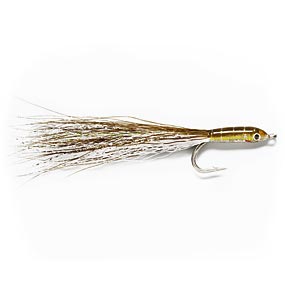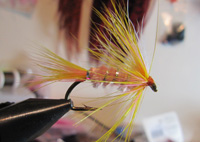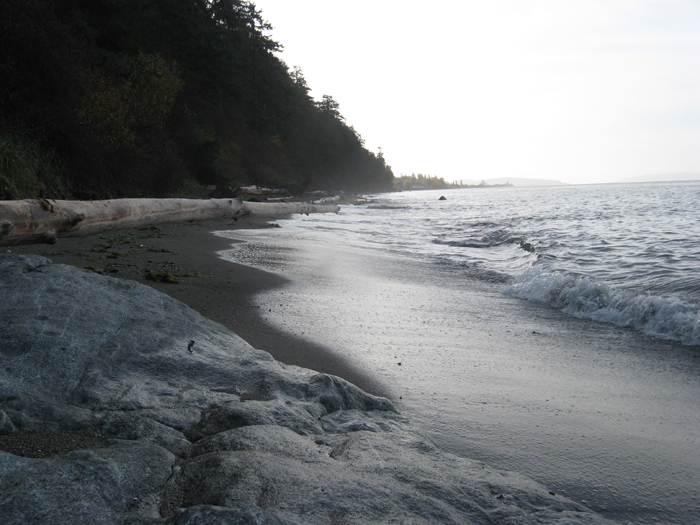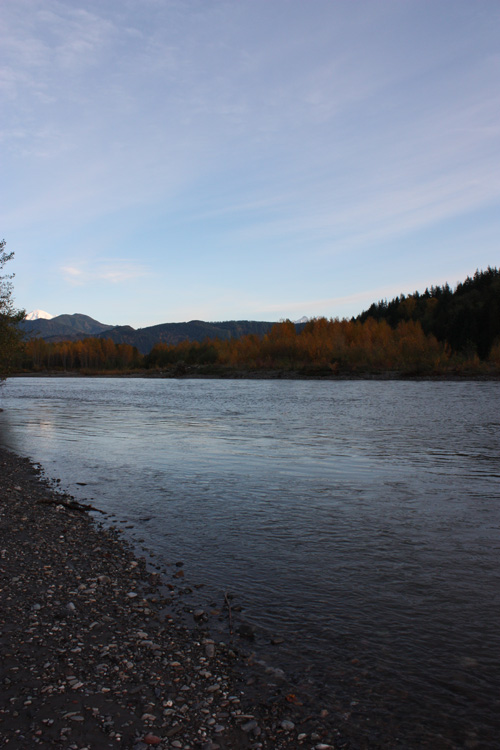Sandlance patterns
Sandlance, also referred to as candlefish, are a long and narrow baitfish that makes up a significant part of a searun trout and other salmonids diet. They are an important forage fish throughout Puget sound and therefore make an excellent food source to imitate with flies. Sandlance fly patterns for searun cutthroat are usually comprised of a long body of bucktail, or other synthetic hair like material, flash, and an epoxy head or body complete with eyes, either painted or stuck within the epoxy head. Fish Sand lance patterns in the saltwater and in estuaries when searun cutthroat are present.
Clousers and Deceivers
Clouser minnows are quite possibly the most widely used, and successfully used, saltwater baitfish flies in existence. The Clouser minnow could be considered the woolley bugger of saltwater flies. Tied in a multitude of colors, Clouser minnows incorporate bucktail, flash, and different size brass, or tungsten dumbbell eyes.

The Deceiver ranks right up there with the Clouser as one of the most prolific flies to grace saltwater fly fishing. The profile of the popular Deceiver pattern matches all sorts of different baitfish, which is why it is one of the most popular saltwater flies. It’s a safe bet to always carry an assortment of colors and sizes.
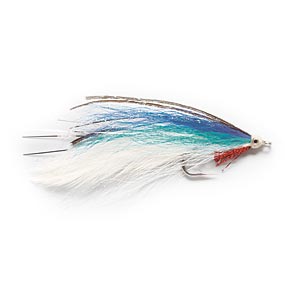
Spiders & Reverse Spiders
Spider, and reverse spider, fly patterns are a simple pattern consisting of a chenille body, often ribbed, and a mallard flank collar, or reverse collar and are very effective of searun cutthroat. The regular spider has a mallard flank collar that flows back towards the hook point. The reverse spider has the mallard flank collar tied in opposite, so that it extends out away from the rest of the fly and over the eye of the hook. Different sizes and body colors are effective for searun cutthroat.
Muddler Minnows
Muddler minnows, and variants like the rolled muddler minnow, are quite possibly some of the best all around flies for searun cutthroat. Why is this? Most probably because they imitate some of the most abundant food sources available in fresh water, whitefish and salmon smolts. Whether fishing the salt or the rivers it’s always a good choice to carry a few muddler minnows in sizes 10 through 6. A gold bead and gold body muddler is a good choice in rivers with strong whitefish populations while it’s generally accepted that the silver bead and body is better in the salt. Muddlers imitate a variety of small fish, and searun cutthroat love to eat them.

Traditional Patterns
Traditional fly fishing patterns have long been used to catch searun cutthroat. An example is the Borden Special which is a more traditional style searun cutthroat fly that maintains a traditional profile. The Borden Special is comprised of a mixture of pink and yellow hackle for the tail and collar, with a pink chenille body ribbed with silver, and topped off with a wing of calftail. Fish the Borden Special just under the surface, with a slow swing to entice a hungry searun to attack.
Woolly Buggers
No fly selection would be complete without an assortment of Woolly Buggers. Searun cutthroat with attack a Woolly Bugger readily at times. Available in any size and color combination imaginable, the Woolly bugger is a good fly to swing or strip for searun cutthroat. Popular colors include black, olive, brown, white, and combination of these colors. A bead, or tungsten cone, is often added to get the fly down in the water column.
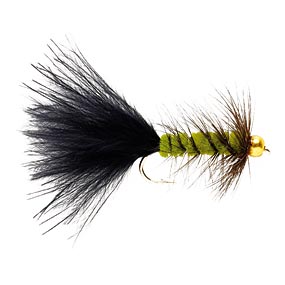
Egg Flies
In rivers and streams with a healthy population of spawning salmon, the opportunity to find searun cutthroat, along with steelhead and bull trout, feeding on salmon eggs is quite possible, if not probable. This scenario is usually found further upriver, where salmon are spawning. When fishing egg flies, be sure to respect the spawning fish, and fish well below them as not to disturb their “happy time”. Egg flies range from balls of glo-bug yarn on a hook to intricate patterns of dubbing, marabou, sparkle and more.
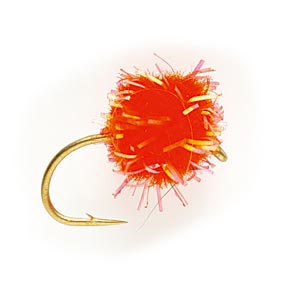
Traditional nymphs, insects, and dry flies
After searun cutthroat have been back in their native rivers and streams for a while, they will start to key back in on the sources of food that they grew up with. This means nymphs, terrestrials, and dry flies. If your streamer patterns and spiders aren’t producing, try something different. Just because searun cutthroat spend a majority of their time in saltwater doesn’t mean that they forgot about their food sources that they were reared on. Match the hatch, and see what happens.
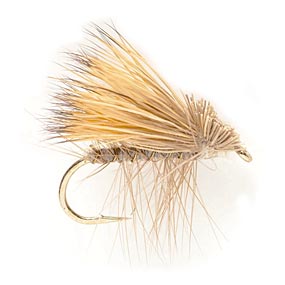
Useful Links
Flies Orvis Flies
Fly tying materials Orvis Fly Tying Materials
More fishing gear Cabelas Fly Fishing
More Flies Cabelas flies

